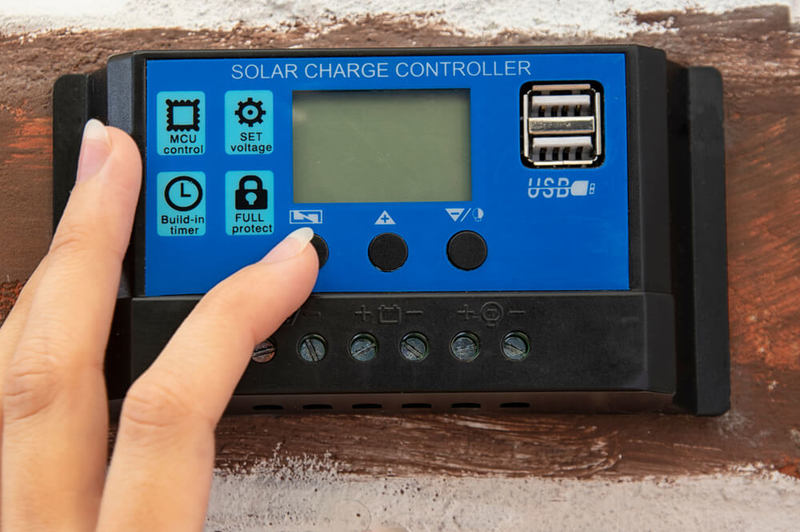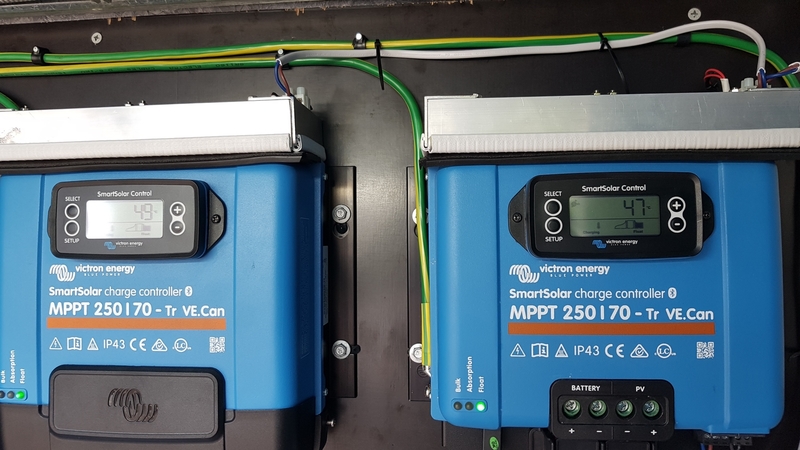For people who spend long stretches of time off the grid camping or RV’ing, overwhelmingly their most essential requirement is having an available source of renewable energy for lights, refrigeration and a small bevy of other accoutrements that make being off the grid livable without sacrificing every amenity imaginable.
When it comes to being off the grid In Australia, though, not only is solar power the favoured form of renewable energy, but it’s also a testament to the nation’s legacy of innovation when it comes to renewable technology.
First developed by a young engineer from Brisbane, the maximum power point tracker, or MPPT solar charge controller, defines a method of power regulation designed to get the maximum amount of charging benefit from photovoltaic systems and sources; and it’s no surprise that the principle behind it has become the de facto approach to designing solar-powered systems, worldwide.
Without effective power regulation, the ability to harness power from solar panels would be largely limited to a daytime activity; and it’s the scope and versatility of MPPT technology that makes it the leader in efficient charge control for a wealth of applications, regardless of the conditions.
Charge Controllers at Work
The life of a charge controller isn’t an easy one – certainly not as easy as it is to get lost in the technical aspects of voltage regulation – but at their core, a charge controller’s only job is ensuring that the photovoltaics in a solar array are doing their level best at all times to keep the storage batteries charged.
It’s because of every current desire to go from a higher potential to a lower one that a charge controller could be regarded as an electronic equivalent to the check valve installed on an RV’s water heat – intent on keeping things flowing in one direction only – to fully appreciate how MPPT technology differs from other types of power regulation, one first needs to come to grips with the fact that for all the practical advantages afforded photovoltaic systems, there’s a massive difference between the power they’re theoretically capable of producing and what their actually output is.

Photovoltaics aren’t perfect energy converters. That they’re affected by everything from overcast skies, to dirt and delamination makes output fluctuations unavoidable … and they occur by the second.
Knowing that only the tiniest changes in temperature, irradiance or cable impedance can affect photovoltaic output, the automated processes used to regulate the system’s usable output needs to be equally nuanced. Converting the maximum voltage from a solar array into the maximum charging amps for a storage battery is a delicate balancing act – and MPPT-type charge controllers do it in a way that others power regulation devices simply can’t.
The best MPPT models available, in fact, are Bluetooth capable devices that not only work from selectable algorithms to “track” where that maximum voltage can be acquired within the solar array, but can also be programmed to monitor battery voltages and temperatures, or to trigger other functions once charging is complete.
It’s this broad ability to optimize performance regardless of external factors that allow MPPT charge controllers to differentiate themselves from more flat-footed charge control variants – in particular, pulse width modulation, or PWM-type charge controllers.
It shouldn’t come as any surprise, therefore, that the MPPT’s responsiveness centres almost exclusively on preserving the integrity of a solar array’s storage batteries.
A Battery’s Business
In spite of their heavyset and often back-breaking demeanour, storage batteries (… as is the case with any battery) are a lot more sensitive than they appear… and that’s especially true when it comes to charging.
Regardless of whether they’re lead-acid or lithium-ion, the batteries typically used in solar systems can only be charged within a small voltage range; and that range will almost always be much smaller than the output voltage the array was designed to produce. As would also be the case with any other kind of battery, trying to charge it using a voltage outside of its range or overcharging it, would lead to damaging it or shortening its life, at best. Inversely, allowing the battery to repeatedly become fully discharged is equally detrimental.
While PWM solar controllers use modulation to bring the entire solar array’s chargeable output voltage down to match the battery’s inherently lower voltage, MPPT solar charge controllers are able to pinpoint the exact location in the array where the system’s output voltage is highest and use only that point to maximize the battery’s charge without interfering with the rest of the system.

In short, that means there are 3 things that an MPPT charge controller is incredibly efficient at when optimizing batteries:
- Converting the maximum amount of voltage a solar array is capable of producing during its most productive periods into charging current for the battery
- Permitting the connecting of lower voltage batteries to significantly higher voltage arrays in order to get the most from the system
- Rapidly recharging deeply drained batteries, and then rapidly shifting them to a trickle-charge mode that allows them to remain fully charged at all times
Ideal MPPT Circumstances
All of this sounds ideal – and having an MPPT is ideal for anyone who’s using photovoltaics – however, there are circumstances when an MPPT solar regulator can even outshine itself for performance.
In Cooler or Inclement Weather
Contrary to popular belief, photovoltaics inherently perform better at cooler temperatures than hotter ones; but the rapid-charging attributes of MPPT solar regulators means they’re ideal for climes and environments where sunlight may be minimal.

When More Battery Power is Being Used
Campers and RV’ers are mindful of the need to ration everything from water to energy; but where energy’s concerned, that needn’t be the rule with an MPPT regulated system. The deeper the batteries are drained, the more voltage will be extracted from the photovoltaic system to recharge them.
When Higher Voltage Systems Are in Use
While moderately-sized photovoltaic systems producing between 100-150W may be acceptable for most people heading off the grid, some have systems many times larger. Because an MPPT is ultimately capable of maximizing the charging voltage for the battery without limiting the system’s overall performance, the size of the system itself doesn’t organically need to match the voltage of the battery.
In conclusion
At the end of the day, it’s difficult not to see the advantage of installing an MPPT solar charge controller with a quality photovoltaic system. To be fair, MPPTs do cost more than other forms of voltage regulation, but the value that’s achievable from how they enable solar systems to perform even more sustainably and efficiently than ever imagined is unquestionable. Regardless of what your off-grid requirement is, a quality solar supplier can gladly demonstrate firsthand the benefits of switching to an MPPT-regulated system.
























